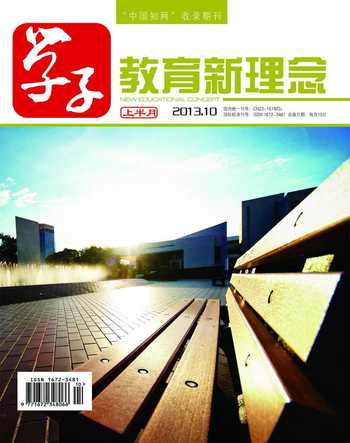复合句之百慕大三角
葛余健
英语中包含从句的句子都称为复合句(Complex Sentences)。复合句包括定语从句、状语从句和名词性从句,是高中英语语法的重点和难点,也是每年高考的必考知识点。三种从句单独分开学习时,学生还可以分析清楚,但因为各种从句本身有一些各自的难点,如果把三种从句以及强调结构等融合在一起,在理解和应用上往往会给学生造成很大的困惑,学生如同进入了百慕大三角迷宫。本文根据个人多年的教学实践,剖析学生在学习复合句时各种从句中的难点以及几种语法结构结合在一起时学生常感到困难的知识点,帮助学生更好地理解和运用复合句。
一、定语从句中的常见难点:
1. which/ as 的区别
例如:
(1)A war is so cruel that it always causes great losses, ______ has happened in Iraq and other countries.
(2)Tom was always late for school, _____ made his teacher very angry.
A. which B. as
分析:as和which 都可以引导非限制性定语从句。as引导的从句位置比较灵活,可放在句首,句中,或主句后。Which引导的从句一般放在主句后,指代前面主句的内容。如果两个句子都放在主句后,需要区别时,可从下面几个方面考虑:1. as的意思一般翻译成“正如;就像”,而which则翻译成“这,这一点”;2. 如果主句和从句语义一致,则用as;反之,则用which;3. 主从句存在逻辑上的因果关系,则用which。综上所述,(1)句答案为as,(2)句答案则为which。
2.preposition + which或 preposition + whom结构中介词的选择
例如:
(1) Gun control is a subect ______ Americans have argued for a long time.
A. of which B. with which C. about which D. into which
(2)For many cities in the world, there is no room to spread out further, ______ New York is an example.
A. for which B. in which C. of which D. from which
分析:介词提前提到关系代词前,介词的选择一般从以下三个方面考虑:1. 介词和动词的搭配;2. 介词和先行词的搭配;3. 介词在上下文中的意思。综上所述,(1)句答案为C,(2)句答案为C。
3.将先行词和定语从句隔开
例如:
(1)Because of the financial crisis, days are gone ______ local 5-star hotels charged 6,000 yuan for one night.
A. if B. when C. which D. since
(2)Nowadays children like to go to the fast food restaurant, _____ as the name says, eating doesnt take much time.
A. which B. that C. what D. where
分析:关系代词通常直接跟在其所限定的名词后面,但先行词与关系代词之间有时加上插入语或其他成分,这个时候必须.分析句子结构,找到先行词,去掉插入语,理解句子的意思。所以上面两句的答案分别为B,D。
二、 状语从句中的难点:
1.特殊的名词或副词用作连词:
例如:
(1)I thought her nice and honest ____ I met her.
A. for the first time B. the first time
C. the moment when D. at the moment
(2)--- Have you paid back the money you owed Tom?
--- Yes. I paid it back _____ I saw him this morning.
A. suddenly B. immediately C. recently D. lately
分析:状语从句中有一些特殊的名词或副词用作连词。高中英语中可用作连词的名词常有the moment, the minute, every time, the first time, next time等,而用作连词的副词常有immediately, directly等。所以上面两句的答案分别为B,B。
2.It + be+ 时间段+ since…从句的不同含义
例如:
--- Would you like to have a cigarette?
--- _____, thanks. It is three years since I smoked.
A.Yes B.No
分析:在此句型中,若从句的谓语动词为短暂性动词,则句意为“自从(短暂性动词表示的动作开始)以来,已经……(时间)了”,若从句中的谓语动词为延续性动词,则句意为“自从(延续性动词表示的动作结束)以来,已经……(时间)了。所以上面的例句答案为B,因为下文It is three years since I smoked.表示我已经三年不抽烟了。
三、名词性从句中的常见难点
1.that/ what用作引导词的区别
例如:
(1)Chinese actress Zhang Ziyi has been criticised for ______ was described as “shameful” for appearing on her knees in front of a foreign detective in her latest film.
A. that B. which C. what D. who
(2)The boy dived into the water and after ______ seemed to be a long time, he came up again.
A. what B. that C. it D. which
分析:在名词性从句中,以what和that作为引导词在历年高考试题中备受青睐。引导词
that在名词性从句中只纯粹作连接词,不作成分,没有意义;而引导词what在名词性从句
中既作连接词,在从句中可以充当主语、宾语、表语和定语。所以上面的例句中答案分别为C,A.
2.whatever/whichever引导名词性从句的区别
翻译:
(1)无论他做什么都不会对我有什么影响。
(2)你们谁第一个到达这里谁就获奖。
分析:whatever 引导的从句中whatever兼有先行词和关系代词两种功能,相当于“anything or everything that”,没有限制范围,所以(1)句翻译为:Whatever he does makes no difference to me.;而whichever相当于“ anyone of…who/ anything of… that”,可以指人,可以指物,有限制范围,所以(2)句翻译为Whichever of you gets here first will get the prize.
四、定语从句和名词性从句易混点
1.that引导的是定语从句还是同位语从句
例如:
(1) The news that the housing price will fall has caused many people to sell their houses at lower prices.
(2) I refuse to accept the blame for something that was someone elses fault.
分析:(1)句中the news 的具体内容是the housing price will fall,that只是引导词,不作成分,没有意义,所以that引导的是同位语从句,而(2)句中that在从句中作主语,所以其引导的是定语从句。
2.who/whoever引导从句的区别
例如:
(1)_______ spits in public should be punished.
(2)_______ has been invited to Claires dinner party has not been known yet.
A. Who B. Whoever
分析:who 引导的从句一般指的是一件事,而whoever可用作关系代词,相当于“anyone who”,也可以用作连词,表示“无论是谁,不管什么人(结果都是一样的)”。所以(1)句的答案是B,而(2)句中whoever等于 anyone who,答案是A。
3.as/it/what引导的句型结构的不同
翻译:众所周知,中国是一个爱好和平的国家。
(1)As is known to us all, China is a peace-loving country.
(2)It is known to us all that China is a peace-loving country.
(3)What is known to us all is that China is a peace-loving country.
分析: as 引导的是非限制性定语从句,所以有逗号和主句分隔开;it是形式主语,真正的主语是后面的that从句;what引导的是主语从句,所以后面有谓语结构。
五、定语从句和状语从句易混点
1. where是关系副词还是从属连词
例如:
(1)Cubism is a type of art ______ things are represented as geometric shapes.
A. which B. what C. where D. that
(2)Our findings suggest people are happiest ______ their personalities mostly resemble those of other people in that area.
A. whether B. where C. what D. how
分析: where可作关系副词引导定语从句,如此,前面一定有先行词,相当于in which;where也可以用作从属连词,引导状语从句或表语从句,表示“在…的地方;在…情况下”。(1)句中引导的是定语从句,所以选择C; 而(2)句中是状语从句,答案是B。
2.so/such…as引导的从句和such/so…that引导的从句区别
例如:
(1)Yunnan was attacked by such a terrible drought _____ few people had expected before.
(2)Such good use has been made of his spare time _____ his Englsih has improved a lot.
分析: such/so…that引导的是结果状语从句,that在从句中不作成分;such/so…as..引导的是定语从句,as在从句中作成分。因此,(1)句中expect是及物动词,所以应该填上as;而(2)句中是结果状语从句,that只是连词,所以填上that。
六、定语从句和并列句的区分
例如:
A) Recently I bought an ancient Chinese vase, the price of _____ was reasonable.
B) Recently I bought an ancient Chinese vase; the price of _____ was reasonable.
C) Recently I bought an ancient Chinese vase and the price of _____ was reasonable.
分析:定语从句与主句有逗号分隔时,没有and,but,so等并列连词;并列句由and,but,so等连词连接,或用分号分隔,所以上面的A句为定语从句,应填上which,B句中the price前面有分号,所以应填上it;C句中the price前有and这个并列连词,所以答案也是it。
七、复合句与强调结构的混合
1. 复合句与强调结构的省略
例如:
--- Where did you get to know her?
--- It was on the farm ____ we worked.
A. that B. where C. which D. there
分析:很多同学一见到it放在句首,就不看上下文的具体意思,就认作是强调句型。其实这是一个强调句型的省略结构,即It was on the farm where we worked that I got to know her,所以选B。
2.复合句与强调结构的结合
例如:
(1)It was with great joy _____ he received the news ______ his lost daughter had been found.
A. because, when B. which, that
C. since, how D. that, that
(2)I dont know _____makes her afraid of having her business discussed.
A. what it is about Mary that? B. that is it abut Mary what
C. what is it about Mary that? D. that is about Mary what
分析: 复合句经常和强调结构结合在一起使用,这时候必须分析句子结构,弄清句意,从而选出正确答案。(1)句中第一空是强调结构,而第二空是that引导的同位语从句;(2)句中是宾语从句和强调结构的结合,从句中的主谓语结构不可以倒装,疑问词提前,所以答案是A。
结束语:
复合句的应用非常广泛,学好复合句的关键在于对句子结构的把握和对引导词的理解。在平时的学习中,学生应加强对从句语法特征和语义的理解和分析,注意比较和甄别,并在语言实践中不断运用,才能真正解决复合句中的易混点。
(作者单位:江苏省苏州中学)

